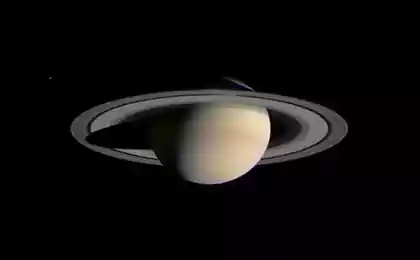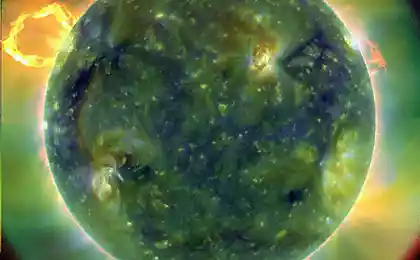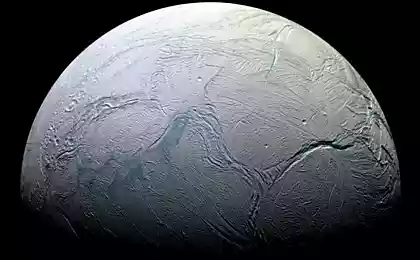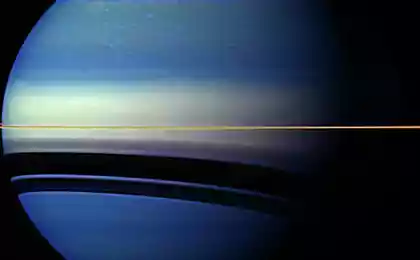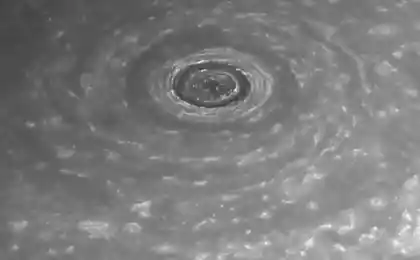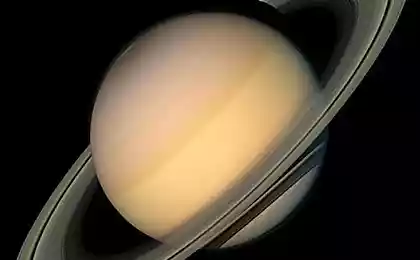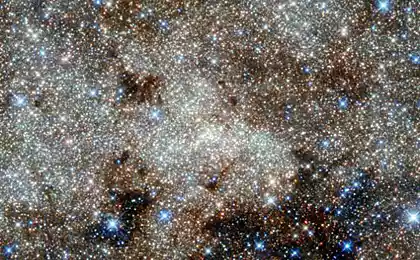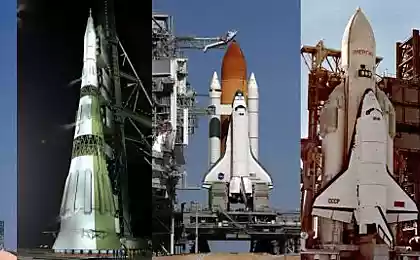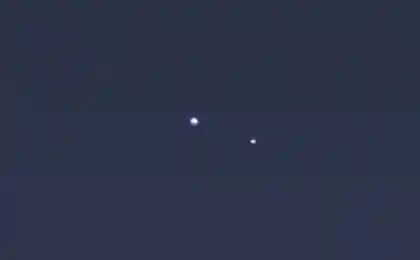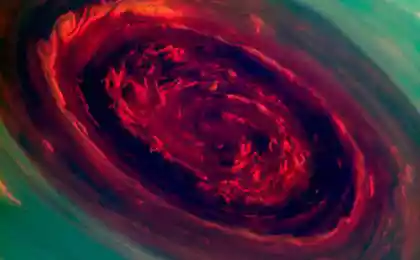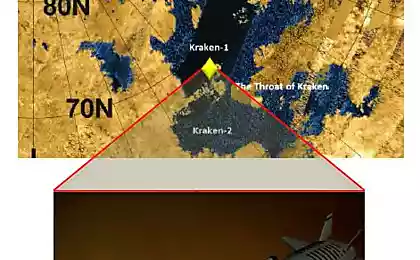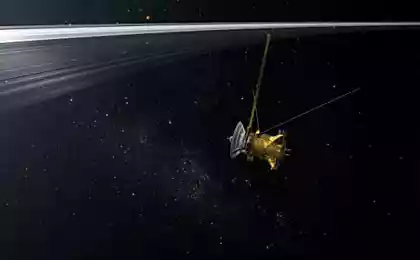749
Saturn Cassini lens (8 photos)
In February, NASA spacecraft "Cassini" transmitted to Earth next package of images of the gas giant and some of its many moons. The focus of the probe at this time was the Titan, the largest moon of Saturn, which "Cassini" approached 19 February.
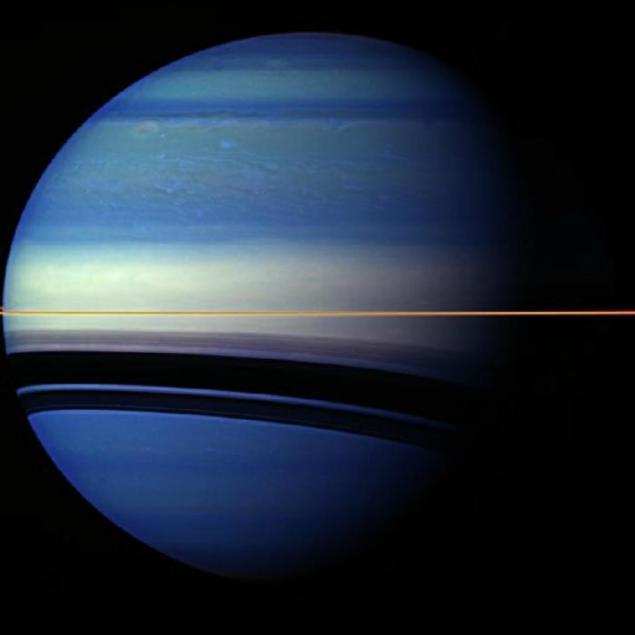
An infrared image of Saturn's giant planet painted in unusual colors. With this artificial coloring pictures can achieve a high contrast between the usually poorly distinguishable details of Saturn's atmosphere.
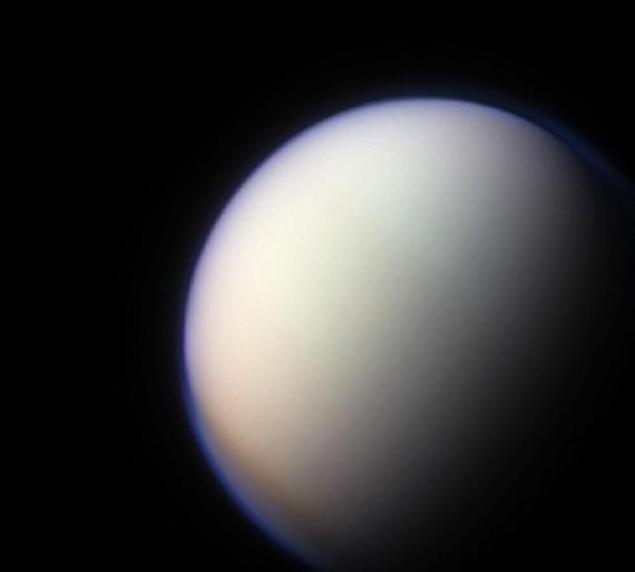
Purple haze of Titan. This photograph of Saturn was made January 30, 2012 cameras spacecraft "Cassini". At this time, the station and the satellite separated 188 thousand. Kilometers - half the distance between the Earth and the Moon. Through the dense haze of the atmosphere in the picture discernible dark spots on the surface of Titan. This - lakes and seas of liquid ethane.
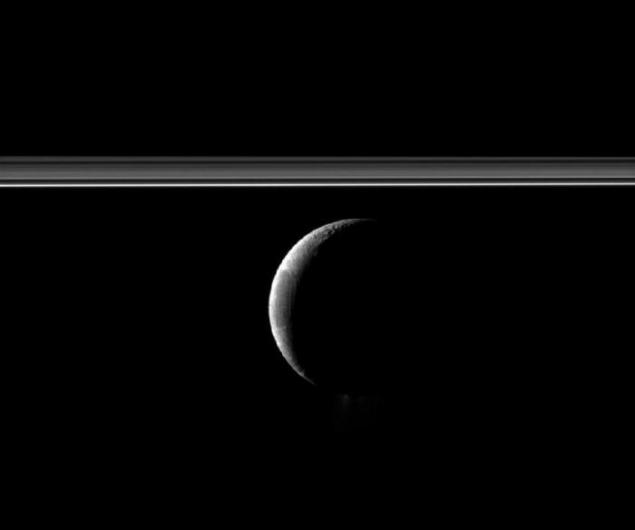
Enceladus and Saturn's rings. Saturn's moon Enceladus small for several years, is the object of attention of scientists. Each time the "Cassini" is not far away, the camera zooms to the probe is a 500-kilometer body to capture fountains geysers spouting from cracks in its icy crust. One of these fountains and noticeable in this picture, as foggy plume over southern unlit side of Enceladus.

Saturn's moon Mimas against the backdrop of the planet's rings. Rings look like in this picture trimmed. All business in the shadow cast upon them the giant planet. Mi? by weight, the satellite 396 km diameter, is closer than the ring. Speck of light on rings - a bright star.
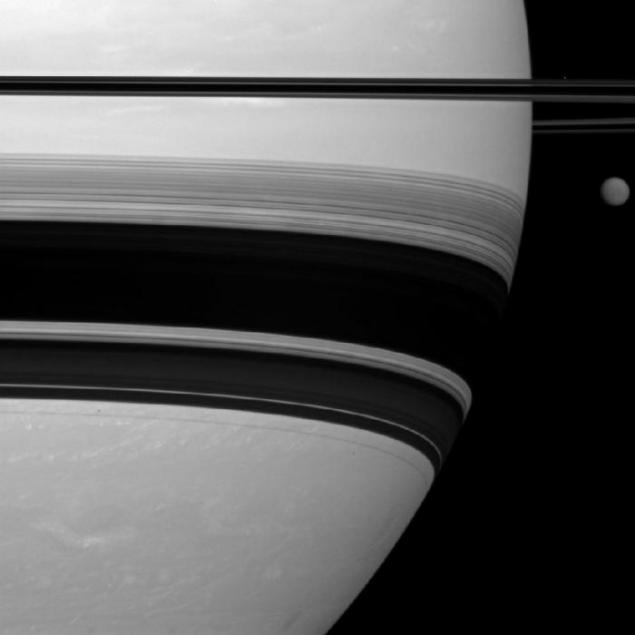
Titan - the second largest moon of the solar system after Ganymede. But how it is small in comparison with Saturn. Prometheus, a small 50-kilometer moon of Saturn, seen over the rings. He casts a shadow on the planet.

Sickle Titan. Color image of Saturn's largest moon, made up of raw images from the spacecraft "Cassini»

Titan. Do not be a cosmic body of Saturn's moon, it could well pass for a full-fledged planet of the solar system. Titanium and a half times larger than the moon, and has a dense nitrogen atmosphere. In this photo visible delicate bluish haze enveloping the distant and cold world.
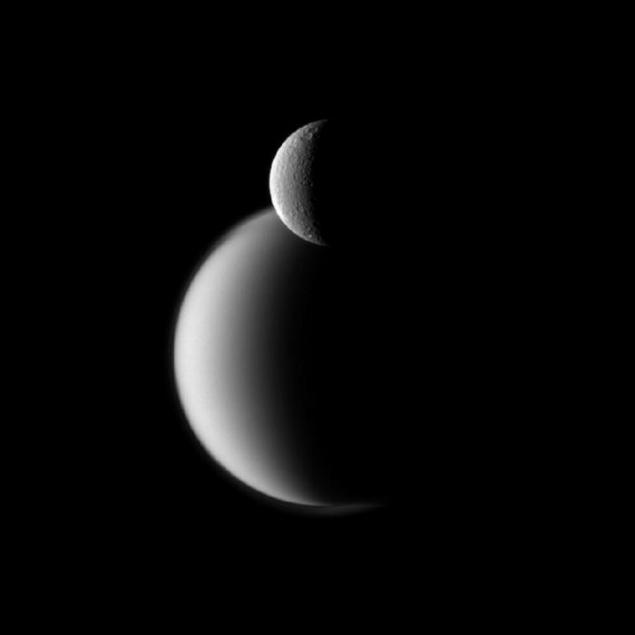
Ray to Titan. Comparison between Titan and Rhea, the two largest satellites of giant planets. Titan is shrouded in a thick atmosphere, aerosol haze which hinders see the surface. Ray - icy body that has no atmosphere at all. Therefore, the disk is clearly delineated and completely covered with craters. Sunlit side satellites in this image appear as sickles, forming a completely fantastic picture.

An infrared image of Saturn's giant planet painted in unusual colors. With this artificial coloring pictures can achieve a high contrast between the usually poorly distinguishable details of Saturn's atmosphere.

Purple haze of Titan. This photograph of Saturn was made January 30, 2012 cameras spacecraft "Cassini". At this time, the station and the satellite separated 188 thousand. Kilometers - half the distance between the Earth and the Moon. Through the dense haze of the atmosphere in the picture discernible dark spots on the surface of Titan. This - lakes and seas of liquid ethane.

Enceladus and Saturn's rings. Saturn's moon Enceladus small for several years, is the object of attention of scientists. Each time the "Cassini" is not far away, the camera zooms to the probe is a 500-kilometer body to capture fountains geysers spouting from cracks in its icy crust. One of these fountains and noticeable in this picture, as foggy plume over southern unlit side of Enceladus.

Saturn's moon Mimas against the backdrop of the planet's rings. Rings look like in this picture trimmed. All business in the shadow cast upon them the giant planet. Mi? by weight, the satellite 396 km diameter, is closer than the ring. Speck of light on rings - a bright star.

Titan - the second largest moon of the solar system after Ganymede. But how it is small in comparison with Saturn. Prometheus, a small 50-kilometer moon of Saturn, seen over the rings. He casts a shadow on the planet.

Sickle Titan. Color image of Saturn's largest moon, made up of raw images from the spacecraft "Cassini»

Titan. Do not be a cosmic body of Saturn's moon, it could well pass for a full-fledged planet of the solar system. Titanium and a half times larger than the moon, and has a dense nitrogen atmosphere. In this photo visible delicate bluish haze enveloping the distant and cold world.

Ray to Titan. Comparison between Titan and Rhea, the two largest satellites of giant planets. Titan is shrouded in a thick atmosphere, aerosol haze which hinders see the surface. Ray - icy body that has no atmosphere at all. Therefore, the disk is clearly delineated and completely covered with craters. Sunlit side satellites in this image appear as sickles, forming a completely fantastic picture.

